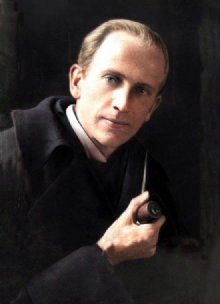Overview
A. A. Milne’s The House at Pooh Corner (1928) is the second and final prose volume set in the Hundred Acre Wood, a gently humorous and quietly poignant sequel to Winnie-the-Pooh. It introduces Tigger, deepens the bonds among Pooh, Piglet, Eeyore, Rabbit, Kanga, Roo, and Owl, and gradually turns its gaze toward change as Christopher Robin begins to grow up. The book blends small adventures with wordplay, songs, and misunderstandings that reveal the animals’ endearing logic, culminating in a tender farewell that has become one of children’s literature’s most moving endings.
Key Episodes
The stories begin with Pooh and Piglet building a house “at Pooh Corner” for Eeyore. Their generous plan is complicated by the discovery that the sticks they used were, in fact, Eeyore’s original home, inadvertently dismantled and reassembled elsewhere, an episode typical of Milne’s affectionate irony.
Tigger’s arrival reshapes the forest’s rhythms. He bounces exuberantly, tries a variety of foods, and learns, after many experiments, that Tiggers don’t like honey or haycorns but are very fond of extract of malt at Kanga’s. He becomes inseparable from Roo, yet his bouncing creates scrapes, including a misadventure up a tree that proves Tiggers don’t climb down easily. Christopher Robin, Pooh, and friends stage a gentle rescue, emphasizing communal care over scolding.
Pooh invents a new game, Poohsticks, by dropping sticks from a bridge to see which emerges first downstream. The simplicity of the game becomes a symbol of shared delight. During one such outing, the friends encounter Eeyore floating by, leading to a deadpan exchange that showcases Milne’s understated humor and the group’s muddled but sincere concern.
Rabbit, fretting about Tigger’s bounce, devises a plan to “Unbounce” him by getting him lost. The scheme backfires: it is Rabbit who loses his way, while Tigger blithely finds home, and Pooh’s intuitive kindness proves wiser than Rabbit’s strategizing. Elsewhere, a misread note from Christopher Robin, “Back Soon” taken as “Backson”, sends the animals on a comically earnest hunt for a nonexistent creature, revealing how language, in their world, is both playful and perilous.
A great wind topples Owl’s house with Piglet inside. Pooh’s bravery and Piglet’s quiet courage see them through, and Eeyore proudly discovers a replacement dwelling, the “Wolery,” which turns out to be Piglet’s own house. In a gesture of generosity, Piglet gives it to Owl and moves in with Pooh, reaffirming the book’s credo that friendship is made of small, noble sacrifices.
Themes and Tone
Across these episodes, Milne explores identity (as Tigger learns what Tiggers are), home and belonging (Eeyore’s and Owl’s houses), and the power of play (Poohsticks) as a binding social force. The prose is light and musical, full of songs, riddles, and misinterpretations that honor a child’s perspective. Beneath the whimsy lies a tender awareness that childhood is fleeting.
Conclusion
In the final chapter, Christopher Robin tells Pooh he must go away to learn important things. They walk to the Enchanted Place and promise to remember one another, “doing Nothing” together forever in memory. The book closes on that soft, luminous note: a celebration of friendship and an elegy for the moment before growing up.
The House at Pooh Corner
Second collection of Pooh stories introducing Tigger and concluding with a poignant farewell as Christopher Robin grows up.
- Publication Year: 1928
- Type: Children's book
- Genre: Children's literature, Fantasy, Animal fiction
- Language: English
- Characters: Winnie-the-Pooh, Christopher Robin, Piglet, Eeyore, Tigger, Kanga, Roo, Rabbit, Owl
- View all works by A. A. Milne on Amazon
Author: A. A. Milne
 A. A. Milne: early life, Punch career, war service, plays, and the creation and enduring legacy of Winnie-the-Pooh with E H Shepard.
A. A. Milne: early life, Punch career, war service, plays, and the creation and enduring legacy of Winnie-the-Pooh with E H Shepard.
More about A. A. Milne
 A. A. Milne: early life, Punch career, war service, plays, and the creation and enduring legacy of Winnie-the-Pooh with E H Shepard.
A. A. Milne: early life, Punch career, war service, plays, and the creation and enduring legacy of Winnie-the-Pooh with E H Shepard.